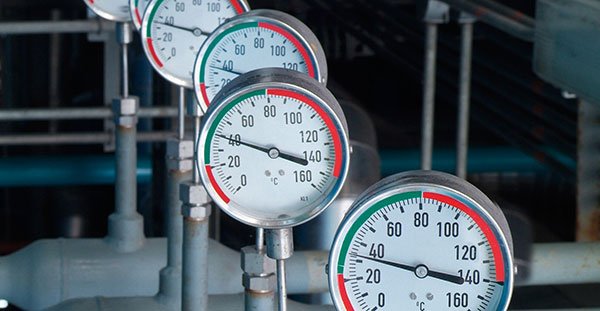Calibrating Industrial Temperature Sensors
Do you use temperature sensors? Calibrating sensors is a process that gives you accurate measurements and leaves no room for error.
Calibration is the process of checking, determining and correcting the settings of a measuring instrument. The process compares a device under test to an accurate reference device. This reference standard is referred to as traceability. Calibrating is a skill for technicians and experts who work with electronic sensors and instruments.
Temperature sensors have an output that’s proportional to an applied temperature. There are five common makes of temperature sensors in industries; thermocouples, bi-metal thermometers, thermistors, infrared radiation detectors, and resistance-temperature detectors.
Contents
Temperature Sensor Calibration
In many industries, temperature sensor calibration verifies the degree of drift from an actual measurement and documents it. Since you can’t adjust this deviation in temperature sensors, you must tune your sensor to give you accurate output.
Why is calibration important?
All electronic sensors and instruments drift from their initial accuracy after extended periods of use. Sometimes, a drift of a few degrees can be disastrous. Calibration corrects this drift or determines their degree of error. Moreover, relevant regulators like the National Institute of Standards and Technology (NIST) require industries to use calibrated sensors and instruments.
Temperature sensor measurements drift due to stressors. For instance, thermocouples experience mechanical stress through thermal expansion and contraction. Notably, you can’t adjust temperature sensors but calibrating tells you how much drift they have and how to correct them. There are three types of sensor calibration for temperature sensors;
- Block calibrators
- Fluidized calibrators
- Blackbody calibrators
Block calibrators
A block calibrator has a heating system that precisely heats a metal block to a set temperature for comparison. They’re light, portable, heat and cool fast, are easy to use and have optional cooling.
Fluidized calibrators
This calibrator uses fluidized beds to create a heat reference that provides thermal contact. It has a wide range of temperatures, a large capacity, calibrates many sensors simultaneously, is more stable than ovens, and is safer than salt baths.
Blackbody calibrators
Blackbody calibrators heat an object whose temperature is precisely known as a reference. The measurement is compared to an infrared sensor.
How To Calibrate Temperature Sensors
Checking a temperature sensor’s readings of two physical constants is the simplest way to calibrate. These constants are the temperature at which water boils and ice melts. However, this fast and affordable method is not NIST traceable so industrial and professional calibrations use dry-block calibrators.
- Use a calibrator to heat a thermocouple sensor to a specified temperature.
- Compare the reading of the sensor’s indicator to the calibrator.
- Use an ice point reference to zero degree celsius comparison, record and compare the readings on the calibrator and sensor again. A stirred ice bath gives you an accuracy of zero degrees celsius (32F)
- Determine corrections from the readings you get.
How Frequently Should You Calibrate?
The impact of stressors on your sensors determines how often you need calibration.
The severity of temperature changes, the size of your sensor, and the number of times you use it determine how often you need to calibrate. Nonetheless, calibrate sensors at least once a year as standard practice. Industrial equipment setups from nriparts.com or any other providers commonly opt to replace temperature sensors instead of calibrating them. You can keep a record of calibrations to use as a reference when you need new sensors.
Where Can I Get My Temperature Sensors Calibrated?
Most organizations use in-house calibration equipment. You can also calibrate your temperature sensors at an ISO17025 and NIST calibration lab to ensure a high degree of accuracy. However, if your devices require high accuracy levels but aren’t legally obliged to attain them, you can do it yourself to lower your maintenance costs.
Conclusion
Calibrating temperature sensors gives you accurate temperature measurements because a drift in your work may be devastating. You need to calibrate your sensors to meet NIST requirements particularly if the law requires you to high standards of accuracy.
| Type | How it works |
| Fluidized Bath | It uses a fluidized bed to create a heat reference that provides thermal contact. |
| Block | It has a heating system that precisely heats a block of metal to a temperature you specify. |
| Blackbody | It heats a surface to a specified temperature. |




